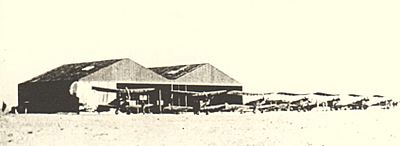No. 5 Wing RAF facts for kids
Quick facts for kids No. 5 Wing RAF |
|
|---|---|
| Active | 15 April 1915–1 April 1920 1 April 1923–April 1924 26 October 1935–14 August 1939 13 December 1939–6 July 1940 1 April 1953–September 1966 |
| Country | |
| Branch | Royal Air Force Royal Flying Corps |
| Role | Corps Wing Home Defence Wing Signals Wing |
| Engagements | Sinai and Palestine Campaign Battle of France |
| Commanders | |
| Notable commanders |
Lt-Col Lionel Charlton Lt-Col Geoffrey Salmond Lt-Col Philip Joubert de la Ferté Lt-Col Amyas Borton Lt-Col Charles Burnett Wing CdrJohn Tyssen Gp Capt Raymond Collishaw |
No. 5 Wing was a special group of aircraft squadrons. It was part of the Royal Air Force (RAF). This group was first created as the Fifth Wing of the Royal Flying Corps. The wing is not active today. It has been formed and then disbanded five times throughout its history.
Contents
First World War Service
The Fifth (Corps) Wing of the Royal Flying Corps was one of the very first "wings" ever created. A "wing" is a large unit of aircraft squadrons. On 15 April 1915, two squadrons, No. 8 Squadron RAF and No. 13 Squadron RAF, joined together. They formed the 5th Wing at Fort Grange, Gosport, in England. Major Lionel Charlton, who led No. 8 Squadron, was the first temporary commander of the Wing.
Middle East Operations
In November 1915, the 5th Wing moved to the Middle East. Lieutenant Colonel Geoffrey Salmond took command. At this time, the wing included No. 14 Squadron RAF, No. 17 Squadron RAF, and a special aircraft park. This park helped with repairs and supplies.
Between June 1916 and October 1917, No. 1 Squadron, Australian Flying Corps also joined the wing. This Australian squadron was known as 67 Squadron by the British. This was to avoid confusion with other similar units.
In February 1916, the 5th Wing's main office was in Ismailia, Egypt. Its squadrons, flying mostly BE2c planes, used airfields in places like Heliopolis and Suez. A special aircraft park for repairs was in Abbasia. One flight of No. 14 Squadron even used 80 camels to carry fuel and sand carts for tents and plane parts! This made them very self-sufficient in the desert.
During the Second Battle of Gaza in April 1917, the 5th Wing was set up in different locations. Its main office was at Rafah, Egypt. The wing had 25 aircraft ready for battle. Most were BE2s, and some were Martinsyde planes. The Martinsydes were good, but they often got too hot in the desert. They were also not as good as the German Halberstadt planes.
By October 1917, before the Third Battle of Gaza, the 5th Wing was under the command of the Palestine Brigade, RFC. It had two squadrons: No. 14 Squadron and No. 113 Squadron. In September 1918, during the big victory at Megiddo, the wing had grown. It included:
- Wing Headquarters at Er-Ramleh
- No. 14 Squadron at Junction Station
- No. 113 Squadron at Sarona
- No. 142 Squadron at Sarona
When the war ended, the Fifth Wing was based at RAF Ramleh in Palestine. The 5th Wing was officially disbanded on 1 April 1920.
Wing Commanders During World War I
- 15 April 1915: L.E.O. Charlton
- November 1915: Lieutenant-Colonel W.G.H. Salmond
- 1 July 1916: Lieutenant-Colonel P.B. Joubert de la Ferté
- 5 February 1917: Lieutenant-Colonel A.E. Borton
- 8 October 1917: Lieutenant-Colonel C.S. Burnett
Reformed in the 1920s
No. 5 Wing was brought back on 1 April 1923. Its job was to manage all RAF fighter squadrons in the northern part of England, above the River Thames. On 30 April, Wing Commander John Tyssen became its leader. However, this time the wing did not last long. It was disbanded again in April 1924.
Commander in the 1920s
- 30 April 1923: Wing Commander J.H.S. Tyssen
Reformed in the 1930s
The wing was formed again on 26 October 1935. This happened because of problems during the Abyssinia Crisis. Group Captain Raymond Collishaw was the commander. The wing oversaw several squadrons, including No. 3 Squadron RAF and No. 35 Squadron RAF. They were active during the Second Italo-Abyssinian War. The wing was disbanded on 14 August 1936.
Second World War Role
During the first year of the Second World War, from December 1939 to July 1940, No. 5 Wing had an important job. After the Dunkirk evacuation, it was in charge of controlling radar units that were based in France. Radar helps detect planes and ships.
Post-War Service
No. 5 Wing was active again from 1953 to 1966. During this time, it was a Signals Wing. This means it focused on communications and electronic signals. It was part of the RAF Second Tactical Air Force and was based in West Germany. Its last base was RAF Butzweilerhof.
See also
- List of Wings of the Royal Air Force


